- How it helps?
- Against covid
- Prone breathing
- Huff coughing
- Bhramari Pranayama
- Nadi Shodhana
- Kapalbhati
- Sheetali
- Lion’s breath
- Deep breathing
- Pursed lip breathing
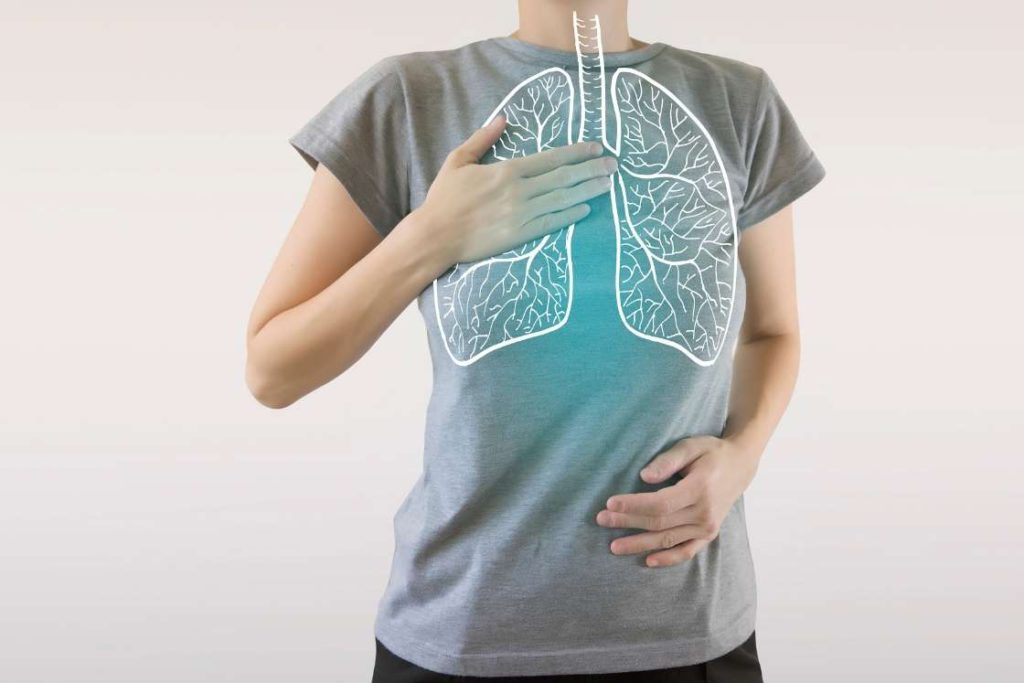
The very idea of shortness of breath can strike a fearful image in the mind. And especially amidst the current pandemic, the horrid image of shortness of breath is striking panic in so many. This concern naturally pushes us to seek the best means available to keep our lungs healthy.
Healthy lungs can be defined as the good ability to exchange gases in the process of respiration. As we inhale, oxygen from incoming air enters the blood, and on exhale, carbon dioxide leaves the blood through the lungs.
Pranayama breathing exercises of yoga are powerful yogic techniques to regulate the lungs’ function efficiently. What happens in pranayama is that we alter our usual pattern of breathing. In this way, pranayama eases those breathing difficulties which may give birth to asthma, COPD, infections like influenza, pneumonia, and other lung diseases.
How can pranayama help strengthen lungs?
Most of the pranayama techniques promote deep breathing to let the lungs get sufficient oxygen.
Pranayama is not only practiced as a means to treat respiratory ailments but to improve respiratory health, in general, to increase exercise tolerance [efn_note] Effect of yoga breathing on exercise tolerance https://www.liebertpub.com/ [/efn_note].
Pranayama has the potential to:
- Increase the flexibility of respiratory muscles, which can increase your oxygen intake.
- Clear respiratory passages and lung airways of phlegm and mucus.
- Clear respiratory passages and lung airways of allergens and toxic irritants.
- Improve the lung’s ability to oxygenate your blood.
- Stimulate the autonomic nerves to generate improved neural respiratory response [efn_note] Neural respiratory elements on autonomic nervous system https://www.sciencedirect.com/ [/efn_note].
It’s evident from a study [efn_note] Effect of yoga practices on pulmonary function tests https://www.researchgate.net/profile/Om-Tandon/ [/efn_note] that regular practice of pranayama can increase the depth of breathing. When the depth of breathing increases, the lung expands more to involve previously inactive alveoli. This process increases the surface area of the respiratory membrane. The same study suggests that yoga and pranayama exercises improve lung capacity and can significantly increase oxygen consumption by 15 to 25%.
On practicing pranayama regularly you will observe an expansion in the chest wall, reduced airway resistance (by somatic muscle relaxation), and the overall compliance of the lung.
In what ways pranayama help against Covid-19?
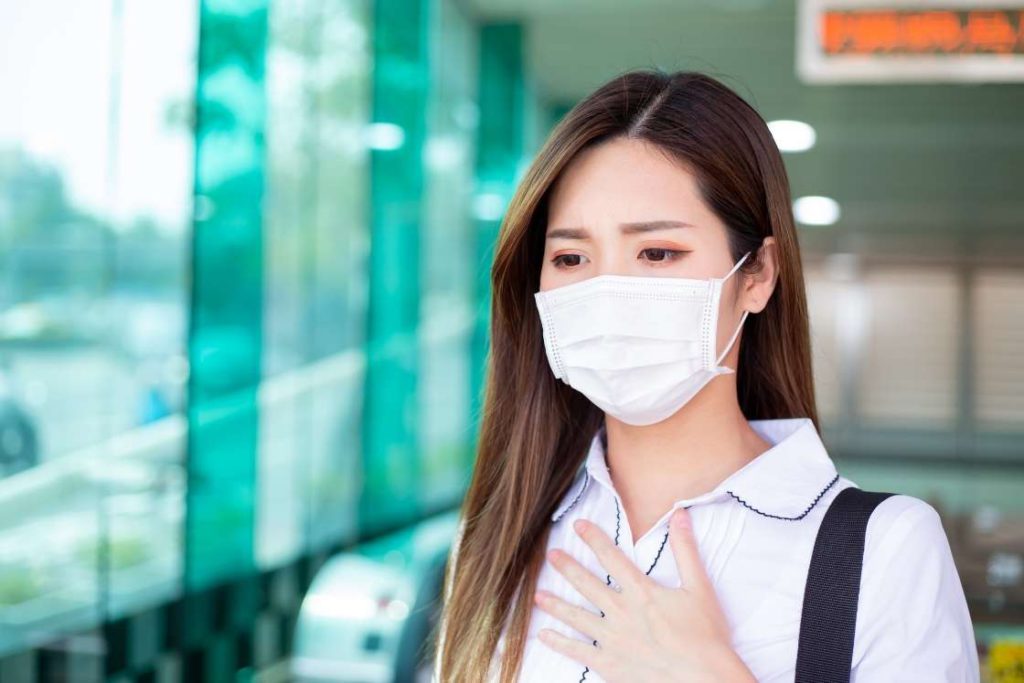
Covid-19 being a respiratory syndrome can affect sinuses, nose, throat, windpipe, and lungs. In a person who has an impaired immunity due to underlying health conditions, an infection due to Covid-19 can progress to severe ARDS (Acute Respiratory Distress Syndrome).
With pranayama breathing exercises, you can train your respiratory muscles to breathe deep and clean your lungs. Further, it increases oxygen levels to tackle Covid-19 related breathing problems.
1. Pranayama can tackle the oxygen crisis
The major crisis faced in severe cases of Covid-19 is that of tackling the drastic fall in oxygen levels. Pranayama is a perfect practice to tackle this issue.
The deep breathing exercise of pranayama expands the chest walls and engages maximum alveolus in your lungs. This will increase your oxygen intake and enhance the replacement of CO2 in your blood with Oxygen. Pranayama will both increase the availability of oxygen to your lungs, and the oxygenation of blood in your lungs.
2. Pranayama provides anti-inflammatory relief
Covid-19 has an alarming potential to trigger maladaptive inflammatory responses. This response leads to Systemic Inflammatory Response Syndrome, Acute Respiratory Distress Syndrome, and multi-organ injury [efn_note] Inflammatory syndromes associated with SARS-CoV-2 infection: dysregulation of the immune response across the age spectrum https://www.jci.org/articles/view/145301 [/efn_note].
Pranayama breathing exercises can help you provide anti-inflammatory relief and precaution in your respiratory and cardiac region. Practicing pranayama will make it difficult for the virus to trigger maladaptive inflammatory immune responses.
3. Pranayama can optimize stress response
The stress and panic of Covid-19 in itself is a major threat. In a burst of anxiety, the body undergoes steep stress responses that have their effect on neural stimulation and muscle contractions [efn_note] COVID-19 related stress exacerbates common physical and mental pathologies and affects treatment (Review) https://www.ncbi.nlm.nih.gov/pmc/articles/PMC7271730/ [/efn_note].
The slow deep breathing involved in pranayama relaxes the somatic muscles and optimizes the neural firings along the autonomic neural pathways, to avoid situations like respiratory constriction and obstruction.
4. Pranayama regulates healthy coagulation
Bleeding is not a very common symptom of Covid 19, however, some extreme cases did report Deep vein thrombosis (DVT) [efn_note] COVID-19 Presented With Deep Vein Thrombosis: An Unusual Presenting https://www.ncbi.nlm.nih.gov/pmc/articles/PMC7273555/ [/efn_note], pulmonary arterial thrombosis, and ischemic strokes.
Pranayama and yoga exercises improve your blood flow, oxygenation of the blood, hormonal activities, and neural activities. These benefits will collectively reduce inflammation, muscle immobilization, and constriction of blood vessels to eliminate bleeding-related risks.
5. Pranayama shield your lung damage
A most frightening impact of the Covid-19 is its potential to damage the alveolar cells of the lungs [efn_note] What Does COVID-19 Do to Your Lungs? https://www.webmd.com/lung/what-does-covid-do-to-your-lungs [/efn_note]. The cells that are responsible for oxygenating your blood. Our lungs have a sufficient bit of spare inactive alveolar cells.
Controlled breathing of pranayama will help you unlock and activate the dormant alveolar cells, to substitute the damaged ones. This will help ease your falling oxygen levels and give your immunity system the time to fight back. Even as a preventive measure, an increased force of alveolar cells will keep you better prepared to fight the infection.
6. Pranayama can boost your immunity
The system that the virus primarily corrupts in your body is your immune system. The virus hijacks your immune system and uses it to damage other organs in your body.
Pranayama breathing exercises are known to improve the aggregate physiology of your body organs. Organs including your cardiovascular, respiratory, neurological, endocrine, and digestive organs. When the physiology of your organs improves, naturally their functions improve. And when your organs function the way they should, your aggregate health improves, prominently reflecting on your immunity system. A balanced immunity system will be hard for the virus to corrupt.
7. Pranayama improve brain health
Pranayama improves your chances of successfully fighting Covid-19 by enhancing your brain physiology and activity. Your brain and the Central Nervous System (CNS) have many functions in fighting Covid-19 infections. Functions like muscular movements important to your organ activities, hormonal activities related to metabolism, nervous control over your body organs, and stimulation of immune responses.
Pranayama increases blood flow to your brain to keep your brain cells well-nourished and optimizes neural activities to keep the functions stable.
Pranayama breathing exercises for lungs
If you intend to enhance your lung performance and general health amid this covid 19 situation, do these pranayama techniques on a regular basis.
1. Prone Position Breathing
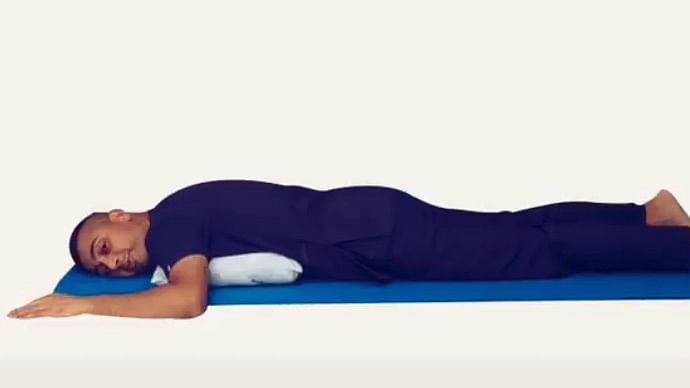
Also known as Proning, this breathing technique is very recommended to increase the lungs’ capacity and oxygen level in little time. In proning breathing, a person having problem in breathing is turned from their back onto their abdomen (stomach), so the individual is lying face down.
It appears to be safe and may slow the respiratory deterioration in select patients with COVID-19 [efn_note] Awake prone positioning in COVID-19 https://thorax.bmj.com/content/75/10/833 [/efn_note], who require oxygen supplementation. It’s preferably performed when a person’s oxygen saturation decreases below 94.
- You need three pillows
- Place three pillows at equal distance to each other.
- Lie on the pillows with your front to the pillows.
- Lie such, that the lower pillow is under your shin bone, the middle pillow is under your hip bone and the upper pillow is under your chest.
- Rest your head on the yoga mat, in front of the pillow under your chest.
- Flex your shin bone downward.
- Place your left hand by the side of your head, palm down
- Place your left hand straight downward along your abdomen and legs, with your palm facing up.
- Take deep breaths. Continue this breathing till you start feeling better.
You can place a folded towel under your face, to rest. Alternatively, you can fold your arms in front of your chest and rest your chin on them.
You can watch this video to know how it works:
2. Huff coughing
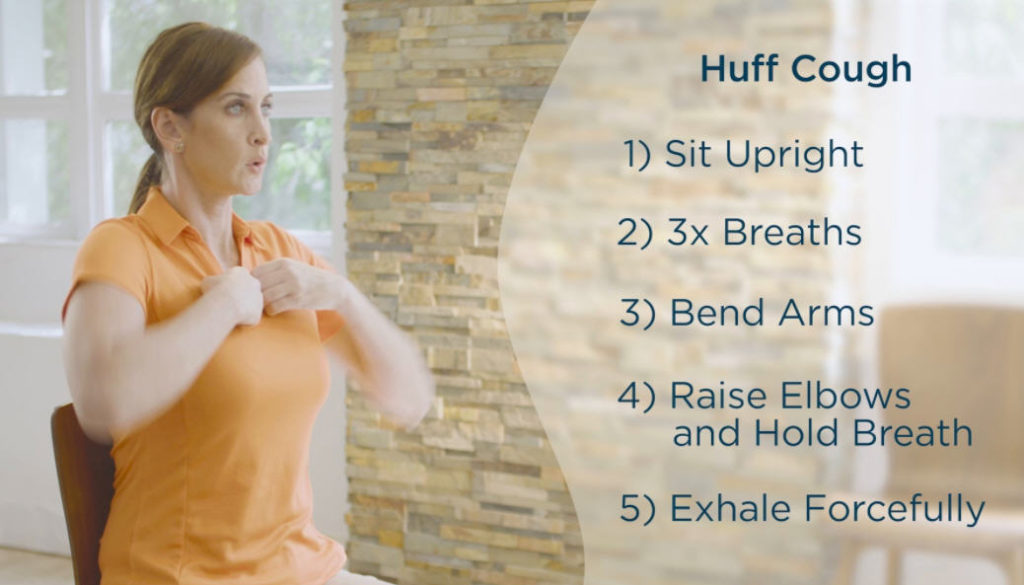
Huff coughing is more appropriate in cleansing your respiratory passages and lung airways. Infection and virus, apart from directly damaging the cells, also create mucus and phlegm blockage. This obstruction will create difficulty in breathing. The Huff coughing can effectively tackle obstruction induced breathing difficulties.
Covid patients can fall prey to chronic pulmonary obstruction. Huff coughing can provide clearance of airway secretions and relieve dyspnea (shortness of breath). Practicing this breathing technique is also a preventive measure, that improves overall lung health and reduces the chance of tissue deterioration during an infection.
- Sit upright in a chair
- Take three average deep breaths by pushing up and down your diaphragm
- Bend your arms, clench your fists and hold them against your chest.
- Take a deep breath. As deep as you can, and then sniff to take in a little more.
- Raise your elbows, outward, upto your shoulder levels.
- Hold your breath for a few seconds
- Make a small oval opening in your mouth.
- Flap your elbows like wings, and forcefully exhale through the opening.
- Make the exhalation like a spurting out flow, and do three such quick successive exhalations.
- Keep your throat open, and use the stomach muscle to forcefully exhale
- Repeat this breathing 3 times.
The huffing can be done in short successive exhalation spurts, or longer successive exhalation spurts. The short spurts will clear shorter airways, and the long spurts will clear the larger airways.
3. Bhramari Pranayama
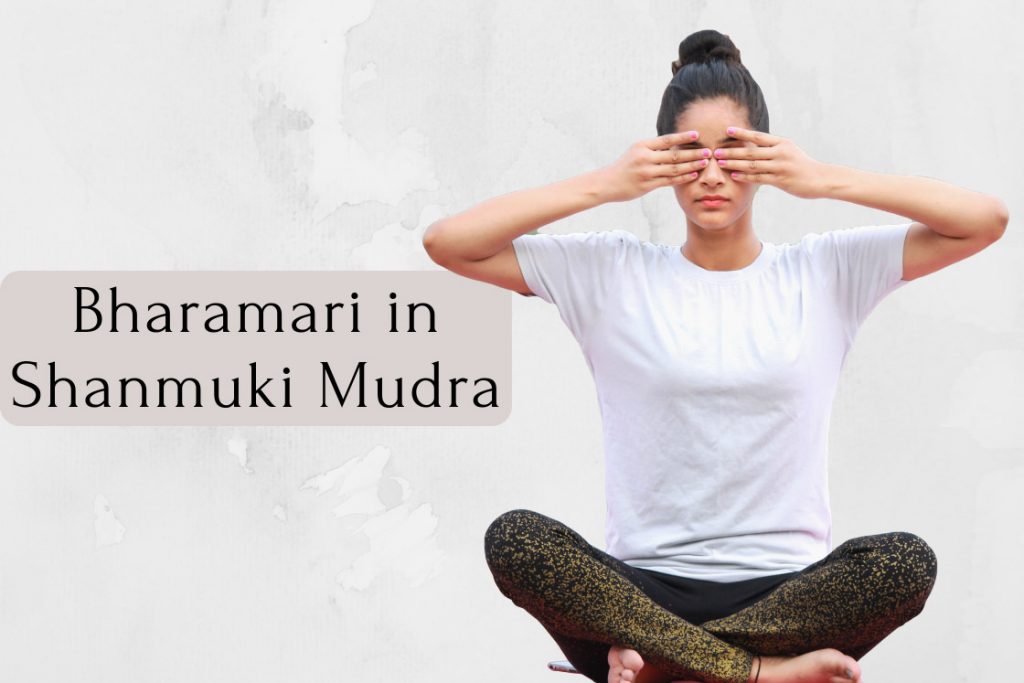
Also known as humming breath, bhramari pranayama can increase the endogenous generation of nitric oxide by 15 times in covid infection [efn_note] Bhramari Pranayama in Covid 19 infection https://link.springer.com/ [/efn_note].
In Covid 19 infection, oxygen deficiency is suffered at the cellular level due to Acute Respiratory Distress Syndrome (ARDS). This condition inhibits properties that reduce blood coagulation. The most critical cases of Covid 19 are results of unusual blood clots.
Nitric oxide is a rapid and potent inhibitor of coagulation in Covid patients. Thus bhramari pranayama by increasing the generation of nitric oxide prevents coagulopathies and morbidities due to Covid 19.
- Sit in a comfortable cross-legged position.
- Take a couple of deep abdominal breaths.
- Close your eyes and all other senses inward with a shanmukhi mudra. Close your ears by placing both your thumbs on them. Place both your index fingers over your eyes and keep them gently pressed. Place both your middle fingers on your nose bridge, your ring fingers above your upper lip, and your little fingers below your lower lip.
- Lift your tongue and press it against the hard palate in Khechari mudra.
- Inhale deep and hold your breath, and slightly blow your cheek.
- Now exhale, slowly, by making a humming noise at the back of your mouth.
- While exhaling keep your eyes closed but fix your gaze between both eyebrows.
- Keep your mouth closed and jaw relaxed.
- Repeat the breathing technique 5 times.
Bhramari pranayama is not a direct benefactor of the lungs. However, in Covid 19 infection it can give different other benefits apart from NO expression like immunity-boosting and stress relieving.
4. Nadi Shodhana Pranayama
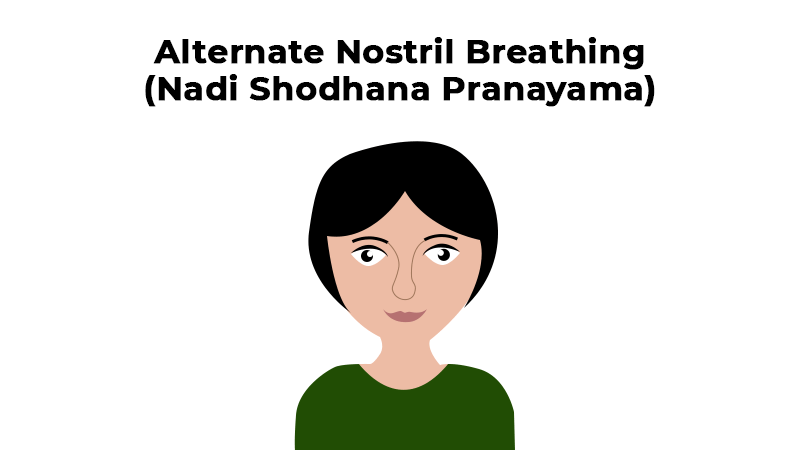
Nadi Shodhana or alternate nostril breathing is one of the most basic pranayamas, that will prove particularly helpful in clearing your nasal tracts, trachea, and lung airways. This pranayama will help you clean your respiratory systems of phlegm, mucus, allergens, and toxic irritants. It also helps relax the respiratory muscles and nerves.
- Sit in a comfortable cross-legged position
- Keep your upper body straight.
- Close your left nostril and breathe in with your right.
- Close your right nostril and breathe out with your left.
- Breathe in with your left nostril, close your left nostril and breathe out with your right.
- Continue this process 10-15 times.
This pranayama will instantly make you feel an obstruction-free breathing sensation. Always try this pranayama the first thing in the morning. Remember to breathe in and out slowly and steadily. The pace is very important for many of the nervous and muscular benefits.
5. Kapalbhati Pranayama
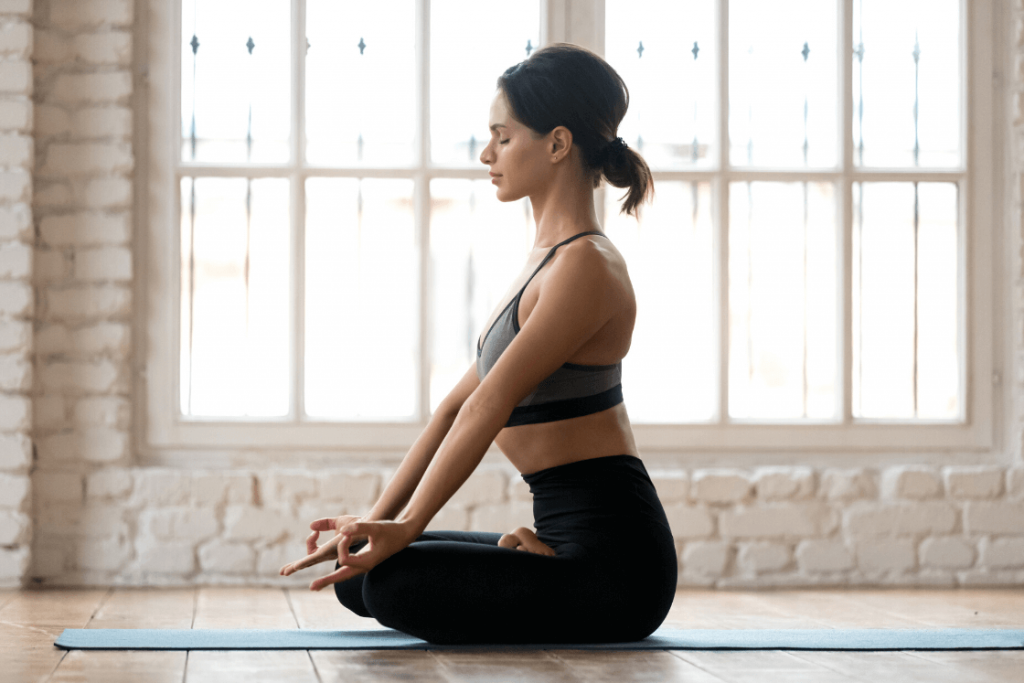
Kapalbhati pranayama is the best breathing exercise to strengthen your chest wall muscles and stimulate all the nerves involved in your respiratory process. It also enhances your digestion and metabolism, which will boost your immunity system.
- Sit in an easy pose.
- Keep your spine erect.
- Place both your hands on your belly button.
- Take a deep breath in.
- Make sudden swift successive contraction of your abdomen muscles to exhale the breath in spurts.
- Slightly press with your hands if needed to support the contractions.
- Do 20 such successive breath spurts, and repeat the pranayama 3 times.
The focus of this pranayama is exhalation. Focus on the abdomen muscle contractions and exhalation spurts. The inhalation will happen automatically as your muscles relax between the spurts.
6. Sheetali pranayama
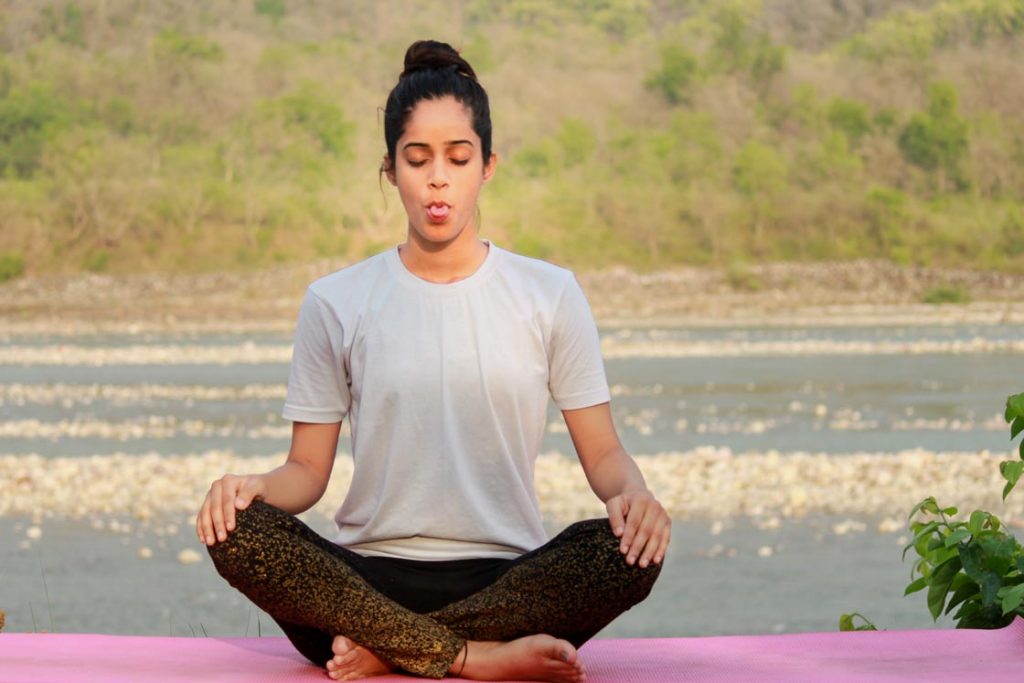
Sheetali pranayama is a cooling breathing technique that benefits your lungs by improving your cardiovascular systems. This pranayama will help you control your blood pressure, anxiety, hypertension and restlessness. However, you must avoid sheetali pranayama if you have serious mucus and phlegm build-up in your respiratory tracts or lungs.
- Sit in a comfortable cross-legged position.
- Extend out the front of your tongue and purse your lips, to roll your tongue as well.
- Now breathe in deep and slowly through the passage between your rolled tongue.
- Hold the breath for a few seconds and exhale with both the nostrils.
Be careful in forming the structure of your lips and tongue. As you purse your lips, don’t let them press on your tongue. Pressing on your tongue will block the passage between your tongue roll, and obstruct the airflow.
7. Lion’s breath
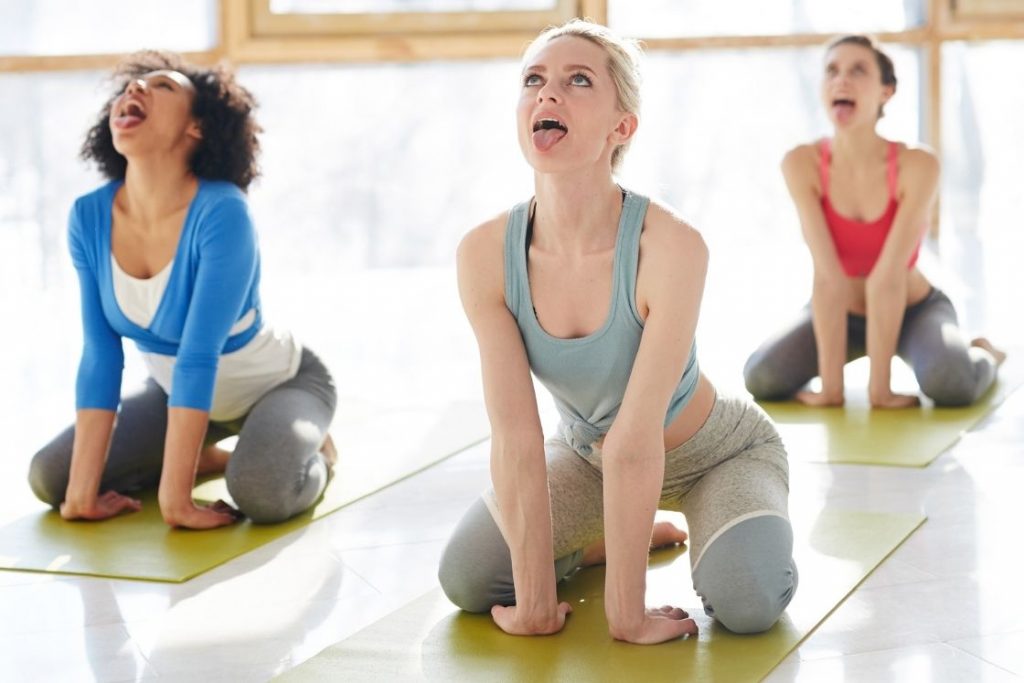
Also known as Simhasana, this breathing exercise boost vocal strength, nervous functions, and vitality. However, it’s an asana but it lays a heavy emphasis on breathing; hence also called lion’s breath.
Simhasana is very beneficial to your vocal tracts. It increases the strength of the muscles of the vocal tracts and your control over them. This asana influences many-core biological mechanisms in your body, that can enhance your immunity.
- Sit in Vajrasana.
- Lean your body forward, keeping your spine erect, and place your palms on your knees.
- Open your fingers and stretch them toward the floor.
- Take a deep breath in.
- Open your mouth as wide as possible, extend out your tongue as much as possible and exhale through your mouth, making a very throat-based sound.
- As you exhale look up towards your forehead.
- Repeat this pose 3 times.
This pose looks very ugly, so if you are going to be conscious about your looks the benefits will be reduced. Additionally this pose can be modified slightly, by opening the knees on either side, and extending the forward leaning by dropping the palms to the ground.
8. Deep breathing
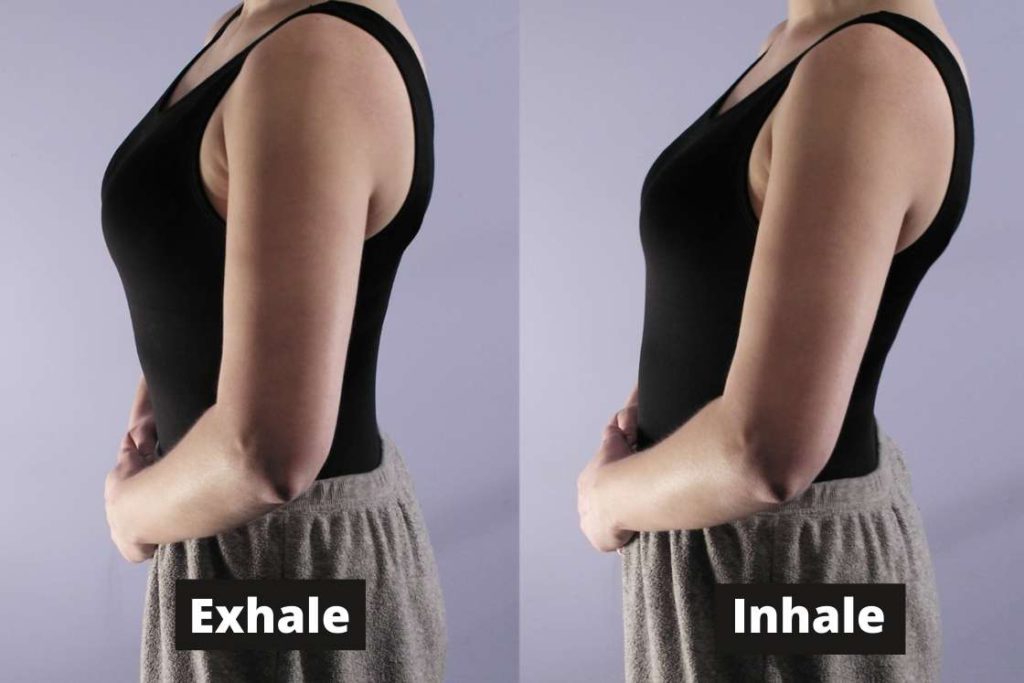
Deep breathing is not specific pranayama, but a general exercise practiced to incorporate three-part breathing.
Practicing deep breathing can increase your oxygen level by almost 10 times. Naturally, deep breathing will prove elemental in increasing the oxygen levels in your blood. It will also expand your chest walls, train your respiratory nerves and relax your respiratory muscles.
- Sit straight in an easy pose or Vajrasana.
- Make sure you have lengthened your spine.
- Slowly inhale and inhale deep into the base of your lungs
- Deep breathing should make your ribcage extend sideways and belly come forward.
- If you are not suffering from shortness of breath, then hold the breathe for a few seconds and exhale through both your nostrils.
- Exhale slowly and steadily.
- Do this about 10 times.
Instead of sitting you can stand in mountain pose as well. As you inhale keep your body muscles relaxed, stiff muscles will prohibit your chest walls from expanding. Also as you inhale don’t lift your shoulders, but keep them pressed down.
9. Pursed lip breathing
Pursed lip breathing is yet another general breathing exercise with many wondrous benefits. This breathing exercise will increase the breathing efficiency; your lungs will make the best out of each breath.
Moreover, pursed lip breathing may be particularly effective in getting more oxygen into your lungs during shortness of breath.
- Sit in an easy pose or vajrasana. You can even sit comfortably on a chair.
- Keep your neck and shoulder muscles relaxed.
- But keep the length in your spine.
- Breathe in deep, slowly.
- Pucker your lips, like while whistling.
- Exhale through pursed lips slowly and steadily.
- Repeat the breathing 3 times.
Exhale slower, for longer duration, than you inhale. Also as you inhale and exhale, try to count in your mind. This will make your breathing more consistent and thus more effective.
Conclusion
Remember end of the day breathing exercise is also a form of exercise. It will eventually tire out your respiratory organs and muscles. You will realize this very prominently as you do a few rounds of Kapalbhati. Thus it is important not to overdo the breathing exercises. Exhausting your lungs could prove counter-productive. As a ground rule try not to exceed 20 minutes of breathing exercise. And when having shortness of breath, reduce it to 10-15 minutes. Finally, like any other exercise, it is important that you are properly nourished and hydrated throughout the day. Otherwise, your body will have low exercise tolerance and efficiency.
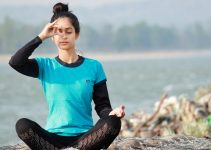
![5 Pranayama for Beginners: How to Do & Benefits [Infographics Tips] 5 Pranayama for Beginners: How to Do & Benefits [Infographics Tips]](https://www.fitsri.com/wp-content/uploads/2020/02/Pranayama-for-Beginners-211x150.jpg)


